What Are Byzantine Icons?
/0 Comments/in BlogByzantine icons are a type of religious art that originated in the Byzantine Empire, the easternmost section of the Roman Empire that was centered in Constantinople (now Istanbul) in the first millennium AD. These iconic images are usually of Jesus, Mary, and the saints and are often crafted in a distinctive style of art that has become known as “Byzantine.” The Art of the Icon follows this tradition closely with our handmade Byzantine icons crafted in Greece. Learn more about Byzantine icons below, and shop with us today!
Reasons to Shop With The Art of the Icon
/0 Comments/in BlogShopping for religious icons can be a powerful and meaningful experience. Whether you are looking for a meaningful gift for a loved one or looking to add a spiritual touch to your home, shopping at a religious icon store can provide you with the perfect piece. Here at The Art of the Icon, we are proud to be the largest iconography company in the world, manufacturing and selling handmade religious icons. Here are some reasons why you should shop at our religious icon store. Shop today!
Iconography: The Meanings and Symbolism Within Our Ancient Faith Icons
/0 Comments/in BlogThroughout the history of the Christian faith, particularly in the Catholic and Orthodox churches, icons have had an important role, acting as an aid in prayer and the deepening of our faith. These ancient icons are often packed full of symbolism and meaning that isn’t always immediately apparent — The Art of the Icon invites you to learn more about some of the fascinating symbolism that exists in many of our faith icons!
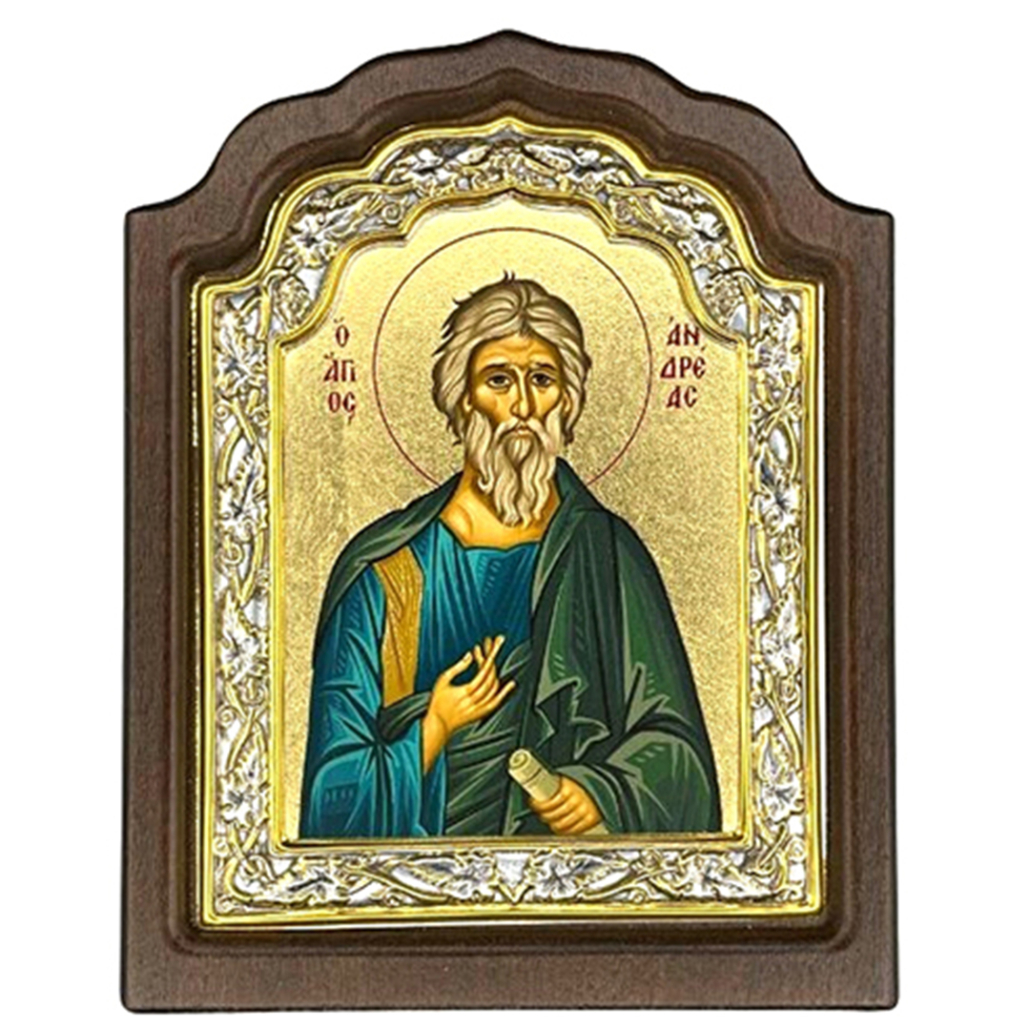
How Symbolism Is Conveyed in Iconography
Throughout the Church’s history, iconographers have used several methods to symbolically depict the sanctity of Christ and the saints. Typically, both faces and bodies are stylize and hands are positioned in various gestures of blessing. Even the geometry in the clothing of the persons depicted is meant to convey a sense of heavenly balance and order. Almost nothing in an icon is there unintentionally or without some level of symbolism.
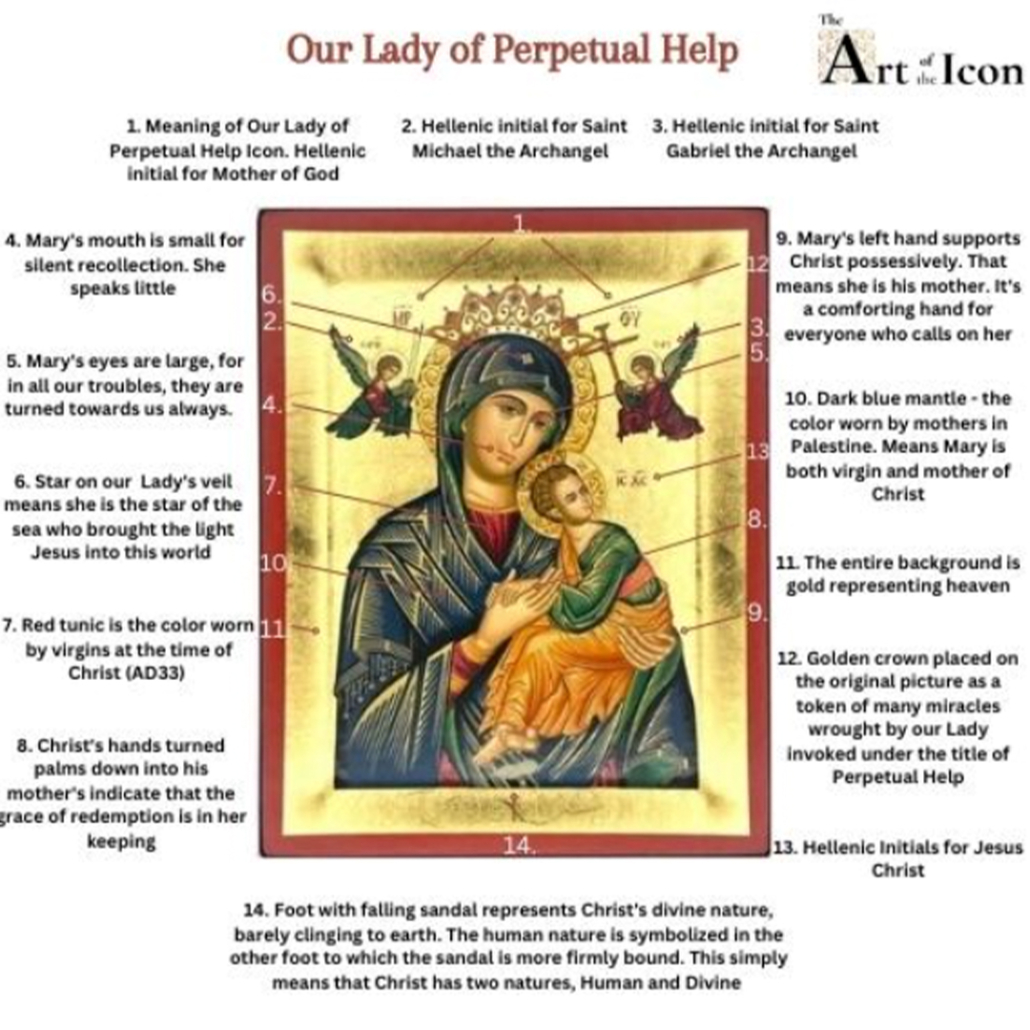
References to the Subject’s Life and Work
In many icons, the images and symbols contained within also communicate an important aspect of that person’s life or something they said. For example, consider the Virgin Mary of Perpetual Help — in this icon, the Virgin Mary is depicted holding Jesus as a child. While a beautiful image on its own, there is more going on symbolically. Mary’s tunic is red, as it was the color worn by virgins at the time of Christ in 33 AD, and her mantle is dark blue, the color worn by mothers in Palestine. These two elements together communicate that Mary is both virgin and the mother of Christ.

Symbolic Letters
Letters are often used symbolically in Catholic iconography. For example, the letters “M.R.” or “M.R.I.A.” are often found in the design of Catholic rosaries and signify the Latin phrase “Maria Regina Immaculatae,” meaning “Mary, Queen of the Immaculate Conception.” These letters are used to emphasize the important role of Mary in the Catholic tradition.
Symbolic Colors
Color is used to evoke emotion and meaning in Christian iconography and can be used to represent many different aspects of the faith. Gold is commonly used to represent the glory and majesty of God. White is often used to symbolize purity and holiness, while red represents the blood of Jesus and his sacrifice.
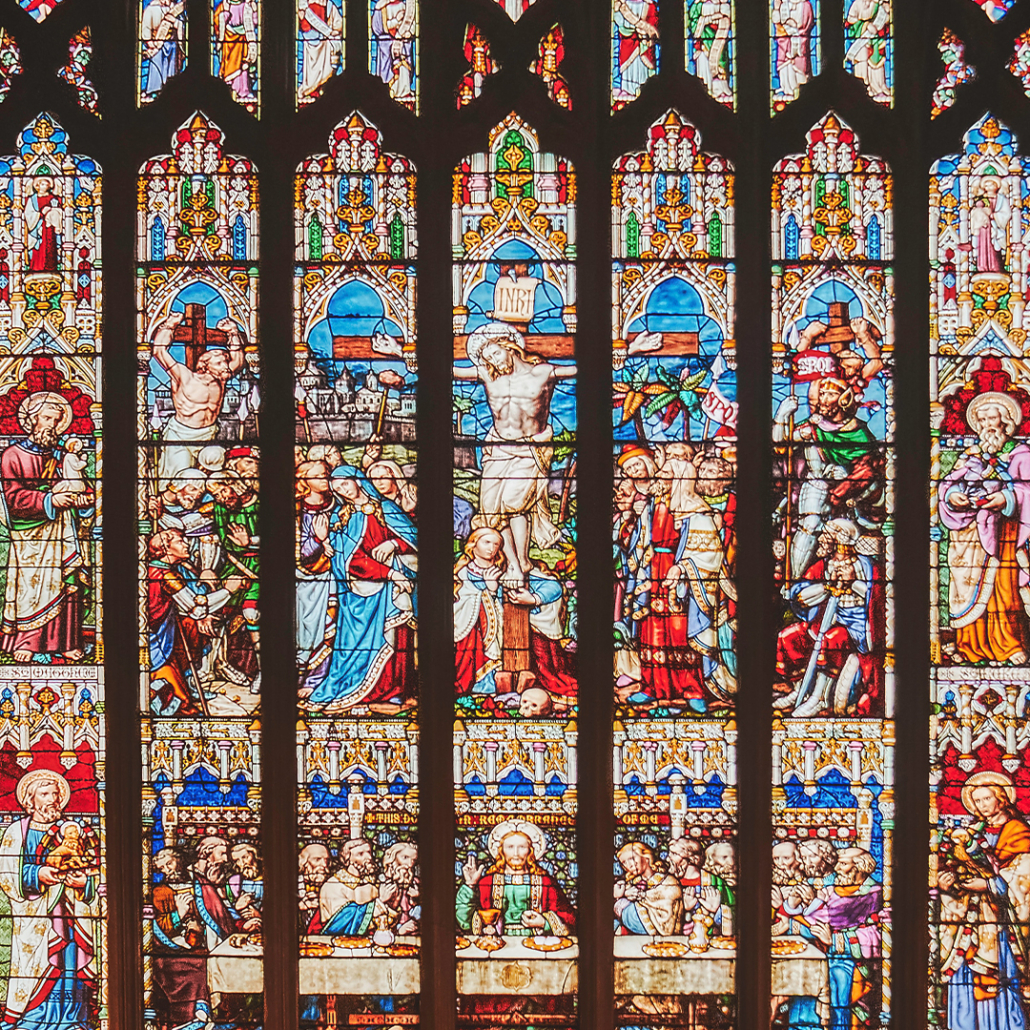
These examples just scratch the surface of the complexity of symbolism commonly found in iconography. Contact us today to learn more, and shop our online store of Byzantine and Catholic icons today!
What Are Catholic Icons and How Are They Used in Prayer?
/0 Comments/in BlogTo those new to or unfamiliar with the Catholic faith the use and function of icons can seem unusual — and that’s alright! Catholic icons and religious imagery have a long, fascinating history in the faith and they are used as a devotional aid in prayer. We at The Art of the Icon, invite you to explore more about the interesting world of Catholic icons.
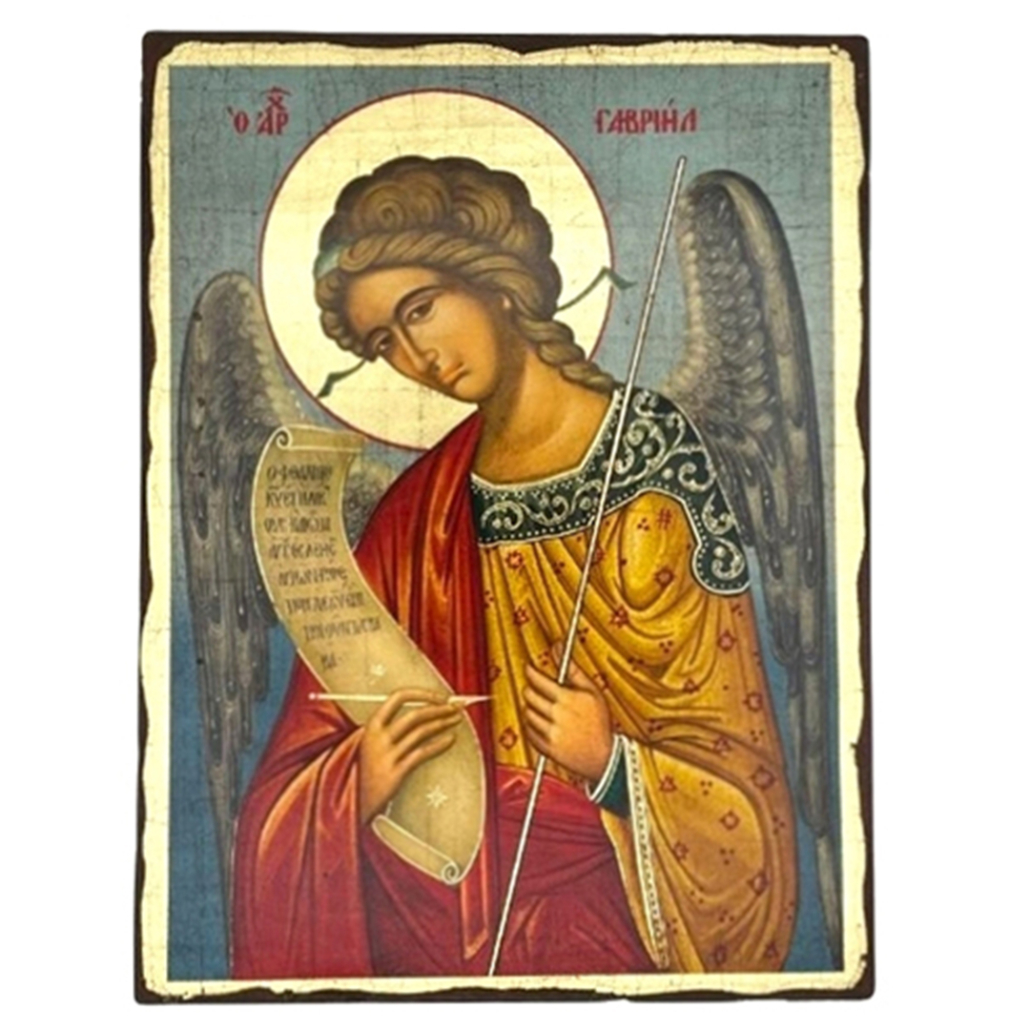
What Is an Icon?
While the word “icon” comes from the Greek word “eikon,” meaning “image,” icons are not just pretty pictures — rather, they are symbolic windows into the spiritual world. They typically depict scenes from scripture, saints, or angels. When we look at an icon, we are actually contemplating the reality that it represents. In this way, icons can help us enter into prayer more deeply.
How Are Icons Used in Prayer?
There are many different ways to use Catholic icons in prayer. One popular method is to sit quietly in front of an icon and simply gaze at it. As you do so, allows your mind to quiet and simply rest in God’s presence, which is often represented in the icon.
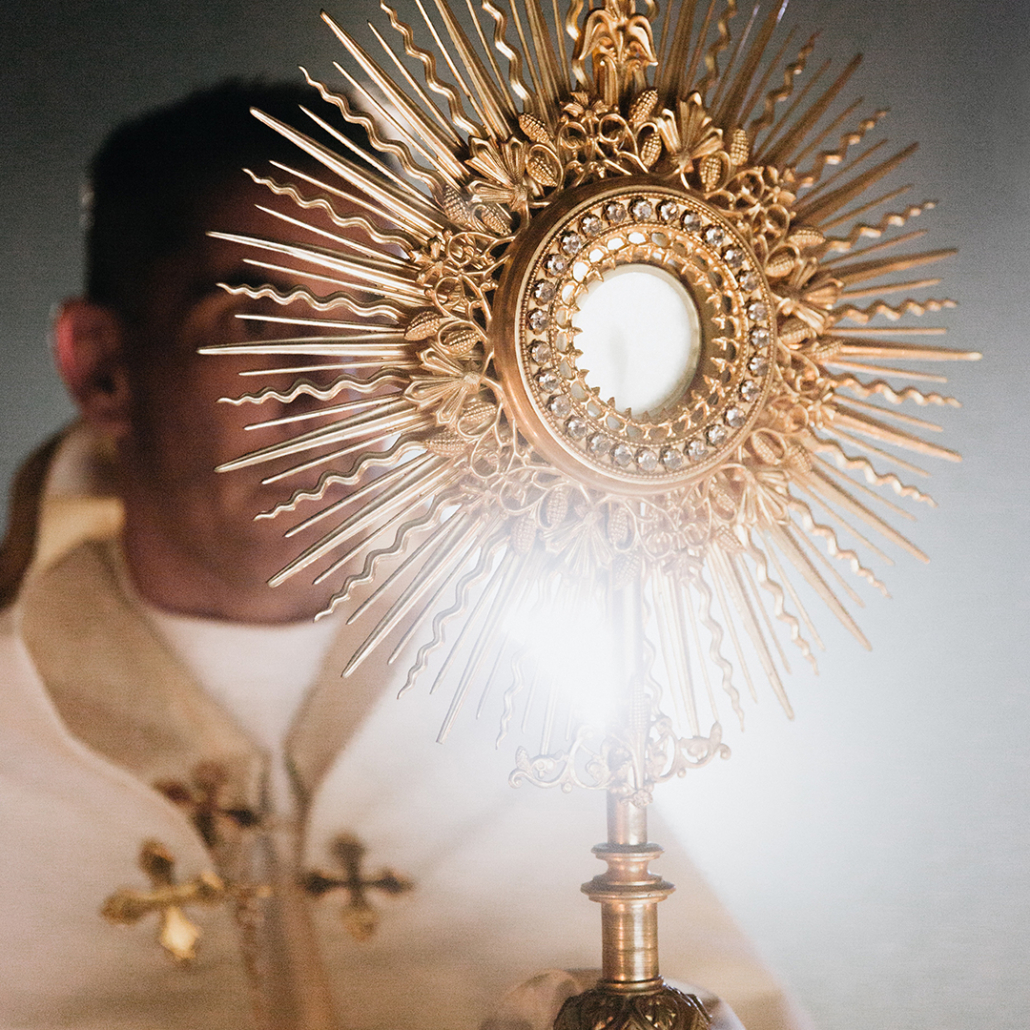
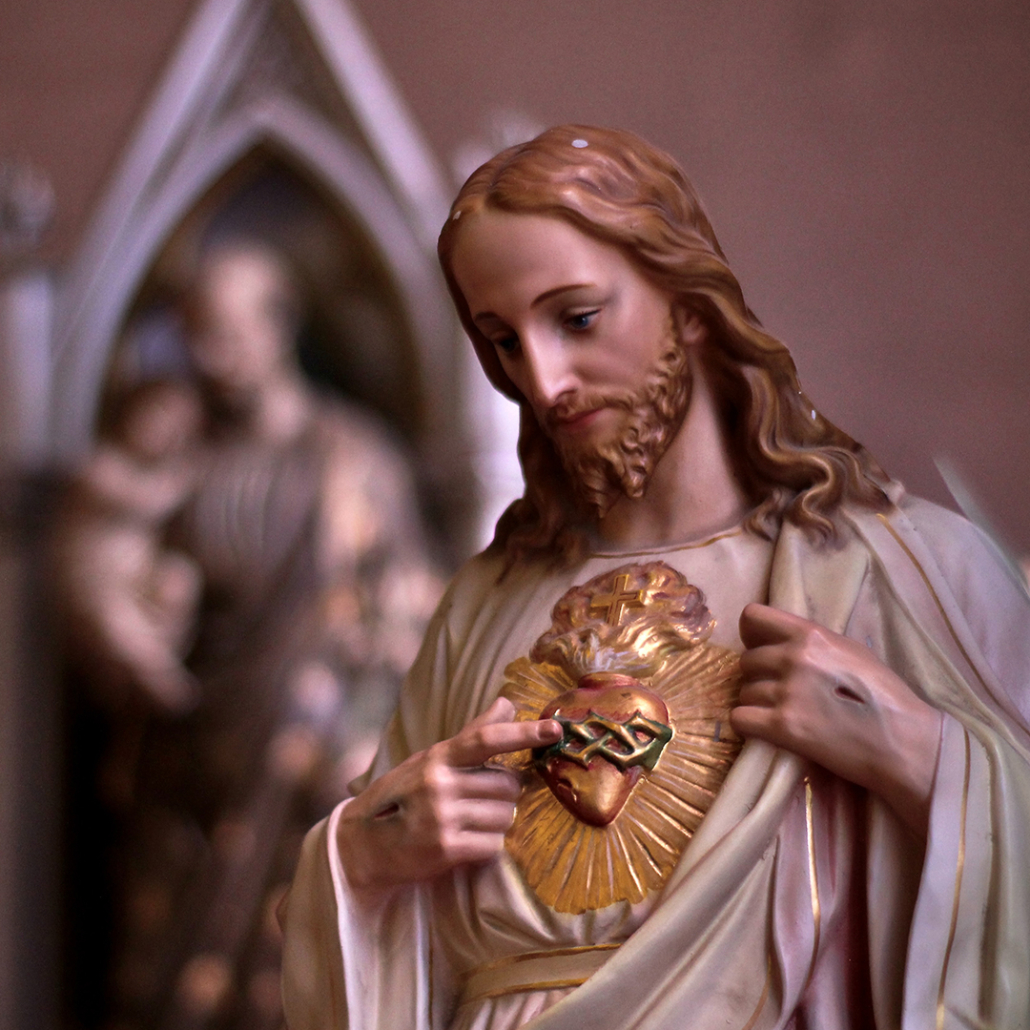
Meditation and Contemplation
Catholic icons can also be used as a focal point for meditation or contemplation. For example, you might reflect on a particular scene from the life of Christ or the Virgin Mary. Or you might ponder a particular mystery of the faith, such as the Trinity or the incarnation of Jesus. Icons can help quiet distractions and allow you to focus on a deeper connection with God.
Icons in Group Prayer
Icons can also often be utilized in group prayers, such as in a prayer service or novena. In these cases, the icon serves as a visual reminder of our shared faith and our common devotion to Christ and His Church.
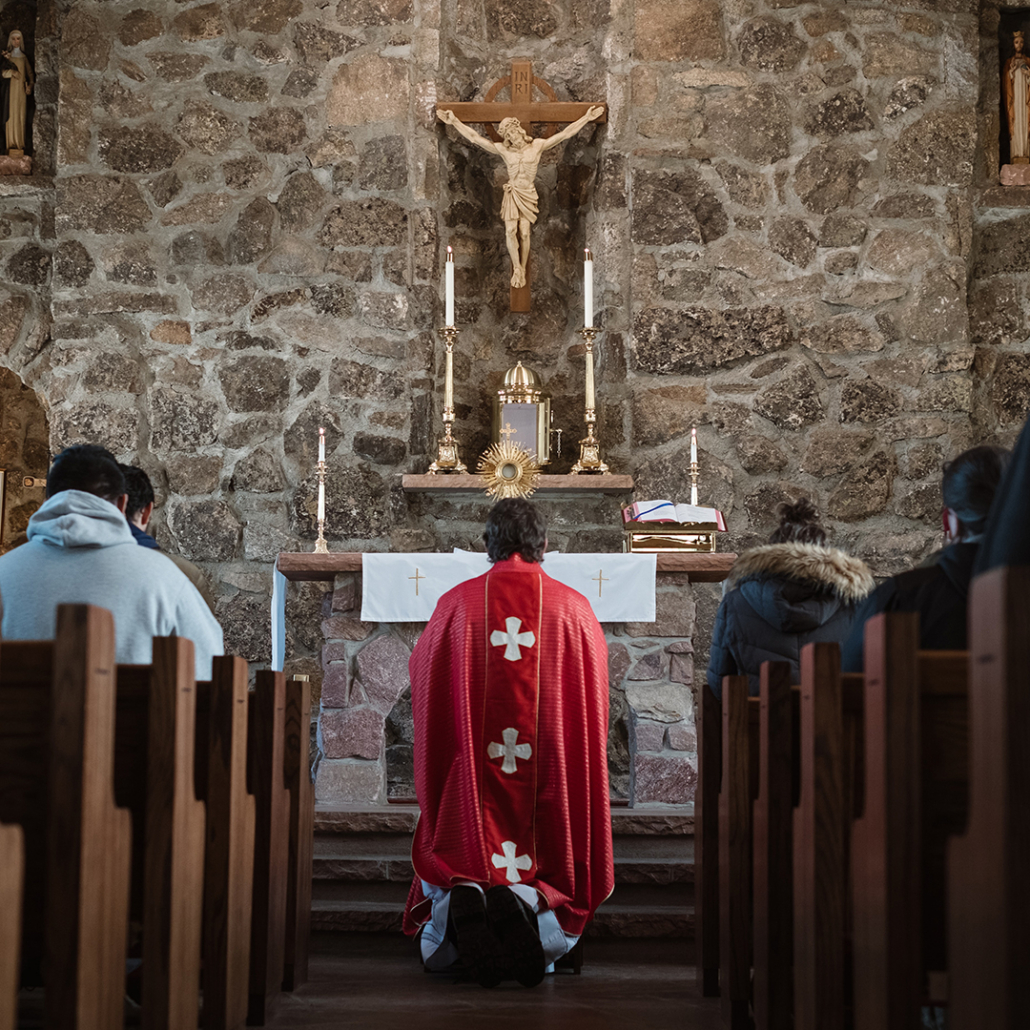
In whatever way you choose to use them, Catholic icons can be a powerful aid in prayer. By fixing our eyes on Christ, we are more likely to find our hearts tuned toward Him as well. The Art of the Icon provides hundreds of beautifully crafted icons to choose from — we invite you to shop in our online store today!
The Feast of Saint Demetrios
/0 Comments/in BlogAmongst the most popular saints in the Greek Orthodox Church is the Holy and Glorious Great Martyr Saint Demetrios. Saint Demetrios lived during the 4th century AD and belonged to a noble family in Thessaloniki. This allowed him to rise the ranks in the Roman military, despite being a Christian in a pagan empire.
Saint Demetrios played a role in converting numerous pagans to Christianity during his lifetime. However, his Christian faith was not respected by all in the Roman Empire, leading many pagans to advocate for his arrest.
During his imprisonment, there was a pagan festival in Thessaloniki, which involved games of combat. Nestor, a Christian man, was participating in the games and went to visit Saint Demetrios in prison to ask for a blessing before partaking in a single-combat game against the giant man Lyaeus. Saint Demetrios blessed Nestor who went on to win in the game, which has been likened to the story of David and Goliath. This further enraged the pagans, leading Emperor Maximian to call for the deaths of both Nestor and Demetrios in 306 AD. They were buried next to each other where Saint Demetrios had been kept as a prisoner.
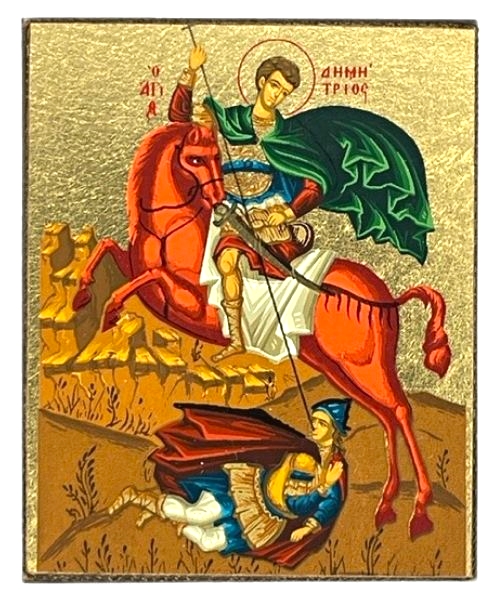
Saint Demetrios is often depicted atop a horse, slaying Tsar Kalyan of Zagora, a Bulgarian king who attempted to invade Thessaloniki in the 13th century. Although Saint Demetrios had been long dead by then, he is attributed with keeping Thessaloniki safe throughout many attempted sieges in the city’s history.
One such event is the First Balkan War (1912), where the Balkan League (Greece, Montenegro, Bulgaria, and Serbia) was attempting to throw-out the Ottoman soldiers remaining in their territories. The war began on October 8, 1912 and on October 26, 1912 – Saint Demetrios’ Feast Day – the Greeks successfully entered Thessaloniki, kicking out the Ottomans in the process. It was after this that Saint Demetrios was declared the Patron Saint of Thessaloniki.
Celebrations for Saint Demetrios are largest in the city of Thessaloniki as it not only marks Saint Demetrios’ feast day, but also the Liberation of Thessaloniki. Saint Demetrios’ feast day is commemorated with a service of the Divine Liturgy of Saint John Chrysostom, which takes place on the morning of October 26. Those named Demetrios of Demetra celebrate their name-days on this day.
The Exaltation of the Holy Cross
/0 Comments/in BlogOn September 14th, the Greek Orthodox Church, alongside the broader Eastern Orthodox churches and the Catholic Church, commemorate the Exaltation of the Holy Cross; also called the Exaltation of the Precious and Life-Giving Cross or the Elevation of the Cross. The feast is tied back to Saint Helen and her son Saint Constantine.
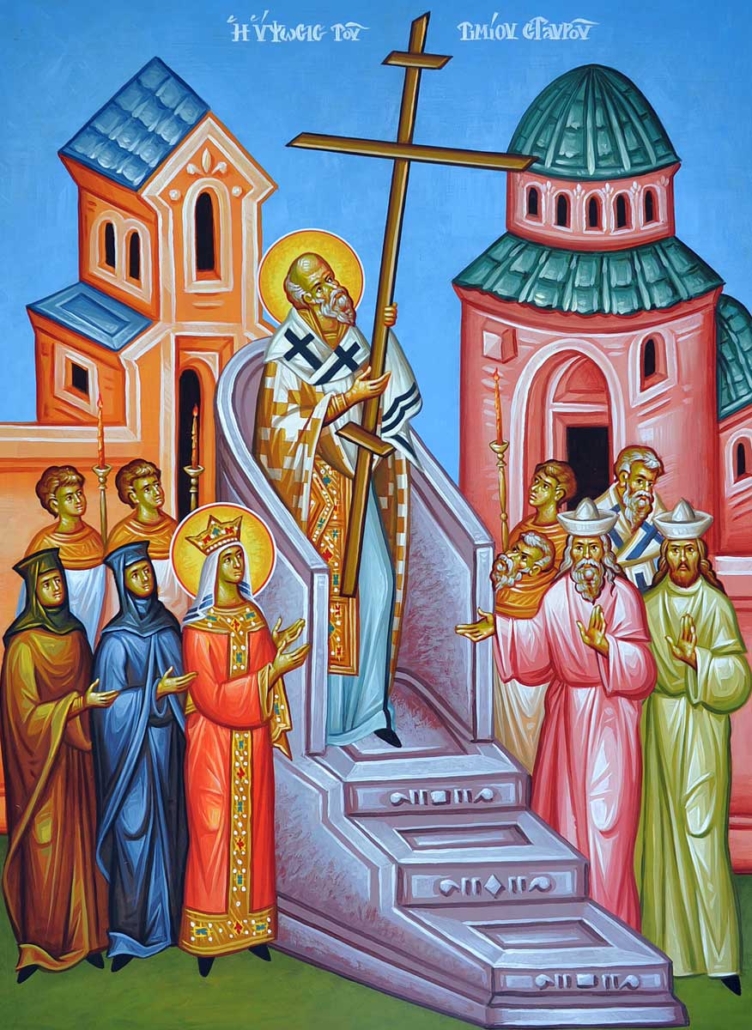
Saint Constantine, also known as Emperor Constantine at the time, had successfully unified the Roman Empire; spreading the Christian faith across its wide boundaries. Under his rule, he sent his mother, Saint Helen, to Jerusalem where he tasked her with locating the Holy Sepulchre and the Holy Cross. In Jerusalem, Saint Helen followed the stories told to her by the faithful, using them to guide her to where she believed she would find the location of the Cross. In 326 AD Saint Helen was successful in her search, locating not only the Holy Cross but also the two crosses upon which the thieves were crucified next to Jesus in Golgotha. It was unclear to Saint Helen, however, which cross belonged to whom. The True Cross of Christ was identified by Patriarch Macarius of Jerusalem when an ill woman touched the cross and was healed.
Today, the faithful attend service to honour the Holy Cross and the eternal life of Christ. The feast is commemorated with the reading of the Divine Liturgy of Saint John Chrysostom on September 14 and a Great Vespers on the evening of September 13. During the service on September 14, a procession occurs with the Priest holding a tray upon which is a cross and basil branches, which represent the basil plants that were growing at the site of the Holy Cross. At the end of the service, parishioners are given basil by the Priest after they venerate the cross.
September 14 is also a major name-day in the Greek Orthodox Church, commemorating those named Stavroula and Stavros, two popular Greek names derived from the Greek word for cross: ‘stavro’. Those who commemorate this day partake in a strict fast, meaning that the faithful refrain from consuming fish, eggs, wine, meat, dairy, or oil. Furthermore, the day is observed as a day of repentance for the faithful.
The Dormition of the Theotokos
/0 Comments/in BlogAugust 15, referred to as Dekapentavyoustos in Greek, is amongst the most important feast days in the Greek Orthodox Church. The date commemorates the dormition and assumption of the Most Holy Lady the Theotokos to heaven. In Greek it is also called Koimisis Tis Theotokou, or “the falling asleep of the Virgin Mary.”
![]()
Beginning on August 1st, members of the Greek Orthodox Church partake in preparations for the upcoming feast. In the Greek Orthodox Church this feast is the second largest, behind Easter. Preparations include fasting from all meat and dairy, eggs, wine, oil, and fish until the 14th of August.
On the evening of August 14 a Vespers service is held in the church. There are also services on each weeknight leading up to the feast, these are the Great Paraklesis or the Small Paraklesis services.
Divine Liturgy service is held on the day of August 15, with the readings from Philippians and Luke. On each feast day for the Virgin Mary the readings include Jesus saying, “Blessed are those who hear the word of God and keep it;” emphasizing the holy status of the Theotokos.
According to tradition, the Virgin Mary was with the Apostles for the Pentecost, which marks 50 days since Easter and the apotheosis of the Holy Trinity. It was on this night that she fell asleep for the last time, surrounded by the disciples of Christ. Only Apostle Thomas was missing from her side.
When he arrived three days later he went to visit the Theotokos’ tomb to pay his respects to the Mother of God. Nearby the Garden of Gethsemane Apostle Thomas found her tomb, but when he entered it was empty. It wasn’t until an angel appeared later that the Apostles learnt what had happened. That the Assumption of the Panagia had occurred and that her body had been ![]() welcomed into heaven.
welcomed into heaven.
In Greece, Dekapentavyoustos – or Panagia – is both a Greek public and religious holiday, with many Greeks celebrating their name-days on the date. Names celebrated on August 15th include Maria, Marieta, Mariniki, Marios, Panagiotis, and Panagiota. Celebrations take place across the country and throughout the wider diaspora with many spending the day amongst family and friends.
Kalo Dekapentavyoustos and Xronia Polla!
Our Products
Help Centre
Company
![]()
© 2022 The Art of the Icon
ALL RIGHTS RESERVED
—
Phone: 1-877-335-0478
Email: info@theartoftheicon.com
Hours: 8:00am – 8:00pm MST